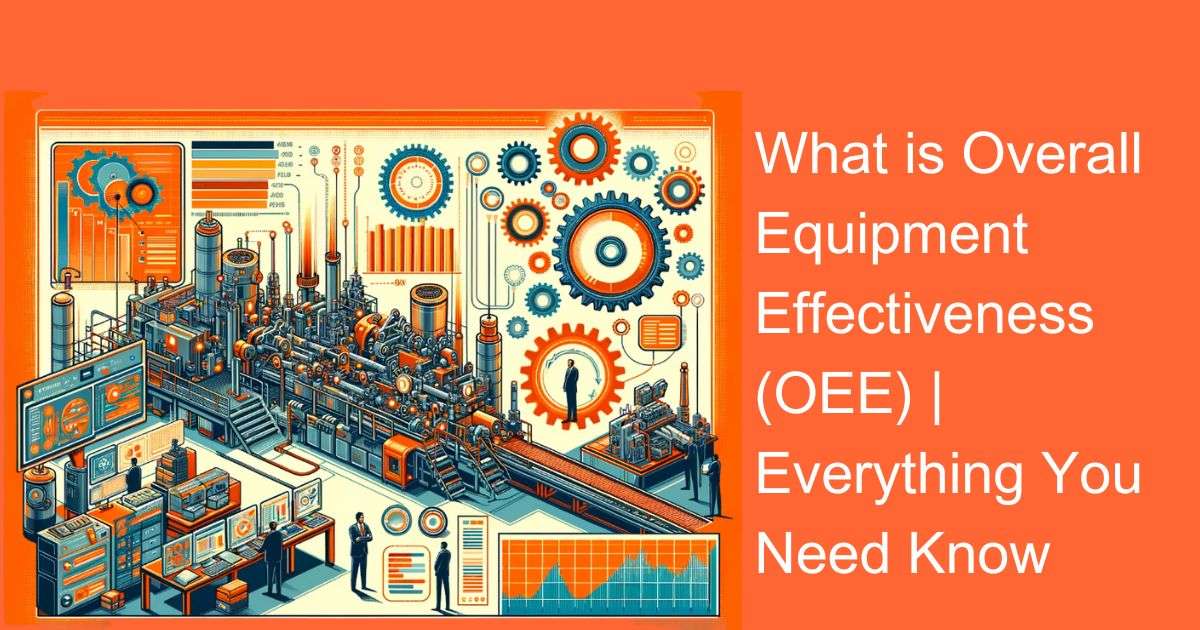Introduction
In today’s competitive manufacturing landscape, maximizing productivity and efficiency has become paramount. Manufacturers across the globe are constantly seeking ways to optimize their operations and reduce downtime. One essential metric that plays a pivotal role in this quest for operational excellence is Overall Equipment Effectiveness (OEE). In this blog, we will explore What is Overall Equipment Effectiveness (OEE), its significance, and its relevance in the Indian manufacturing context.
Understanding Overall Equipment Effectiveness (OEE)
Overall Equipment Effectiveness (OEE) is a key performance indicator that provides manufacturers with valuable insights into how efficiently their machines or equipment are operating. OEE is often expressed as a percentage and serves as a comprehensive measure of a machine’s or process’s efficiency by taking into account three critical components:
Availability:
This factor measures the proportion of scheduled production time during which the equipment is available for production. It takes into consideration unplanned downtime, such as breakdowns or setup and changeover time.
Performance:
Performance considers the actual production rate compared to the maximum potential output of the equipment when it is running at its optimal speed and quality. It accounts for any speed losses or minor stoppages during production.
Quality:
The quality aspect assesses the number of good units produced in relation to the total number of units produced. It considers defects, rejections, and other quality-related issues that may arise during production.
The formula for calculating OEE is simple yet powerful:
OEE (%) = (Availability %) x (Performance %) x (Quality %)
Significance of OEE
Identifying Opportunities for Improvement:
OEE provides a clear picture of where and why production inefficiencies exist. By breaking down the three components of OEE, manufacturers can pinpoint areas that need improvement, whether it’s reducing downtime, increasing equipment speed, or enhancing product quality.
Setting Realistic Targets:
OEE allows manufacturers to set realistic performance targets based on actual machine capabilities. This ensures that production goals are attainable and aligned with the equipment’s capacity.
Reducing Costs:
By optimizing machine performance and minimizing downtime, manufacturers can significantly reduce operational costs. This includes savings on maintenance, labor, and energy consumption.
Enhancing Overall Productivity:
Improved OEE directly translates into increased productivity. Higher OEE means more products are produced in less time, leading to improved profitability.
OEE in the Indian Manufacturing Context
India is one of the world’s fastest-growing manufacturing hubs, with diverse industries ranging from automotive and textiles to pharmaceuticals and electronics. The adoption of OEE in the Indian manufacturing sector is gaining momentum for several reasons:
Cost Sensitivity:
In a highly competitive market, Indian manufacturers are under constant pressure to reduce costs while maintaining quality. OEE helps them identify and eliminate wasteful practices, ultimately saving money.
Government Initiatives:
The Indian government has introduced initiatives such as “Make in India” and “Digital India” to promote manufacturing and technology adoption. OEE aligns with these initiatives by fostering efficiency and competitiveness.
Increasing Automation:
Automation is on the rise in Indian manufacturing, and OEE is a crucial tool for monitoring and optimizing automated processes. It ensures that investments in automation yield the desired results.
Quality Assurance:
In sectors like pharmaceuticals and food processing, product quality is paramount. OEE helps manufacturers maintain consistent quality standards, reducing the risk of recalls or quality-related issues.
Challenges in Implementing OEE in India
While the benefits of OEE are clear, its successful implementation in India comes with its own set of challenges:
Lack of Awareness:
Many Indian manufacturers are not fully aware of the concept of OEE or its potential benefits. Raising awareness and providing training is essential for successful adoption.
Data Collection:
Accurate data collection can be challenging, especially in smaller or less technologically advanced manufacturing setups. Implementing data collection systems and ensuring data integrity is a crucial step.
Cultural Resistance:
Traditional manufacturing practices can be deeply ingrained, making it challenging to drive change and encourage a culture of continuous improvement.
Conclusion
Overall Equipment Effectiveness (OEE) is a powerful tool that can significantly enhance manufacturing operations in India. As the country continues to witness industrial growth and technological advancements, the adoption of OEE can serve as a catalyst for improved efficiency, reduced costs, and enhanced competitiveness. By understanding and implementing OEE effectively, Indian manufacturers can position themselves for success in both domestic and global markets, ultimately contributing to the nation’s economic growth.








